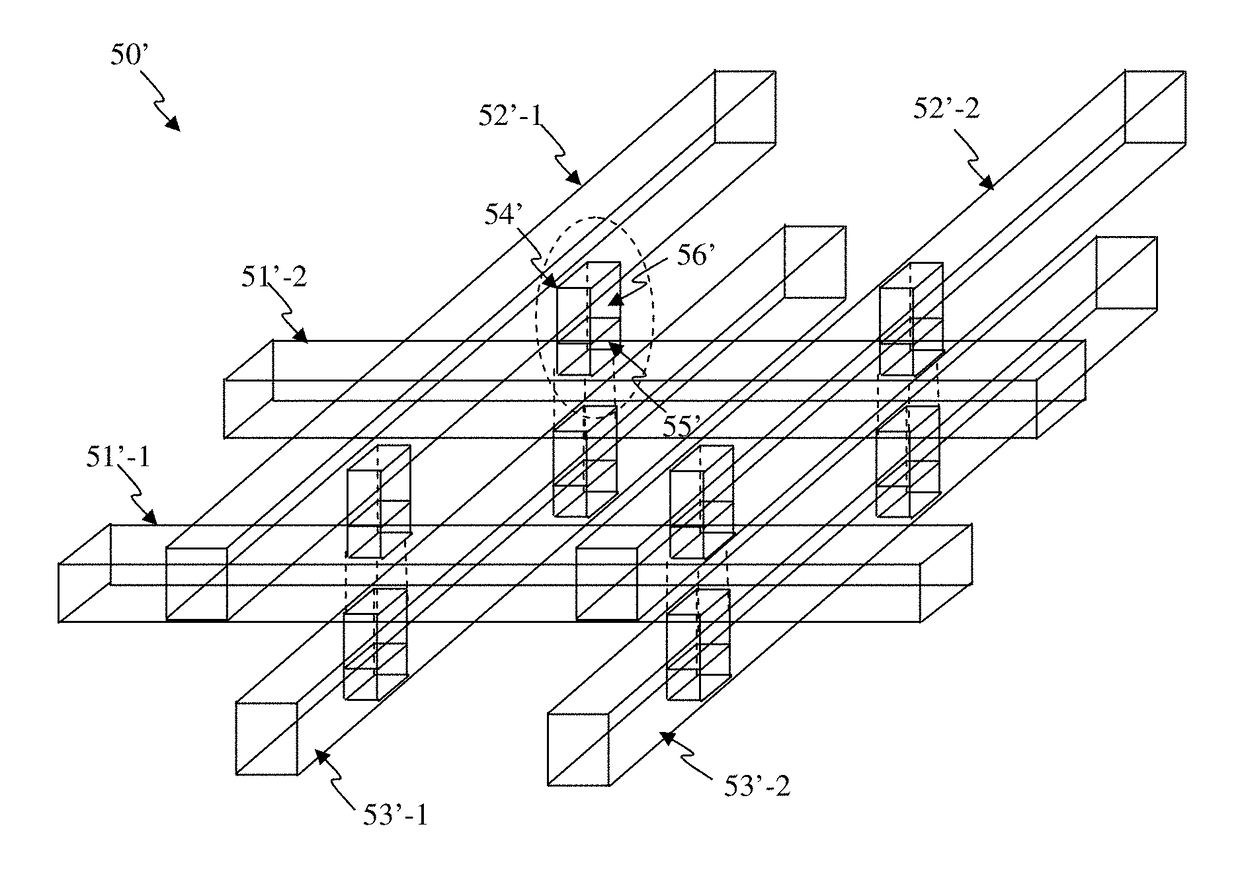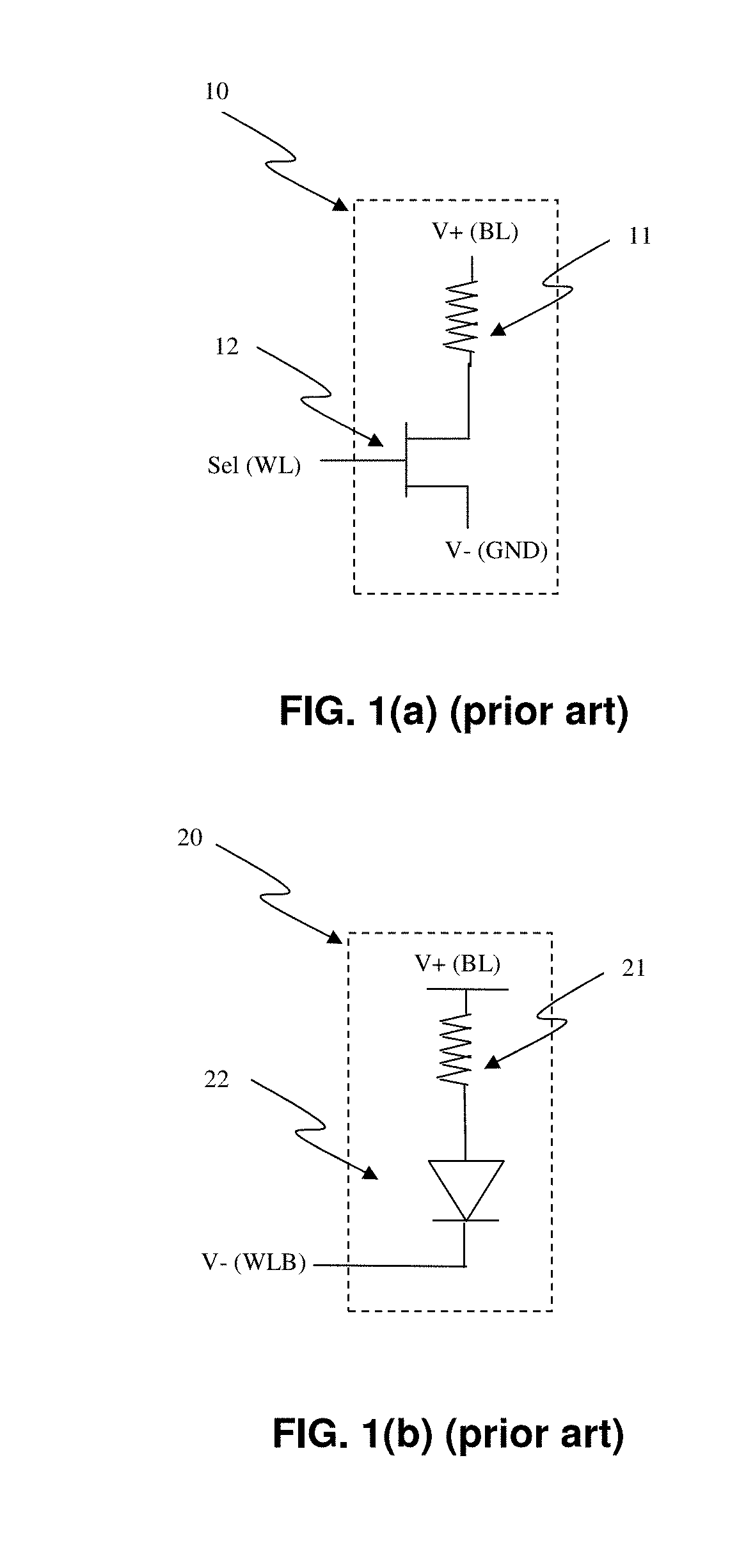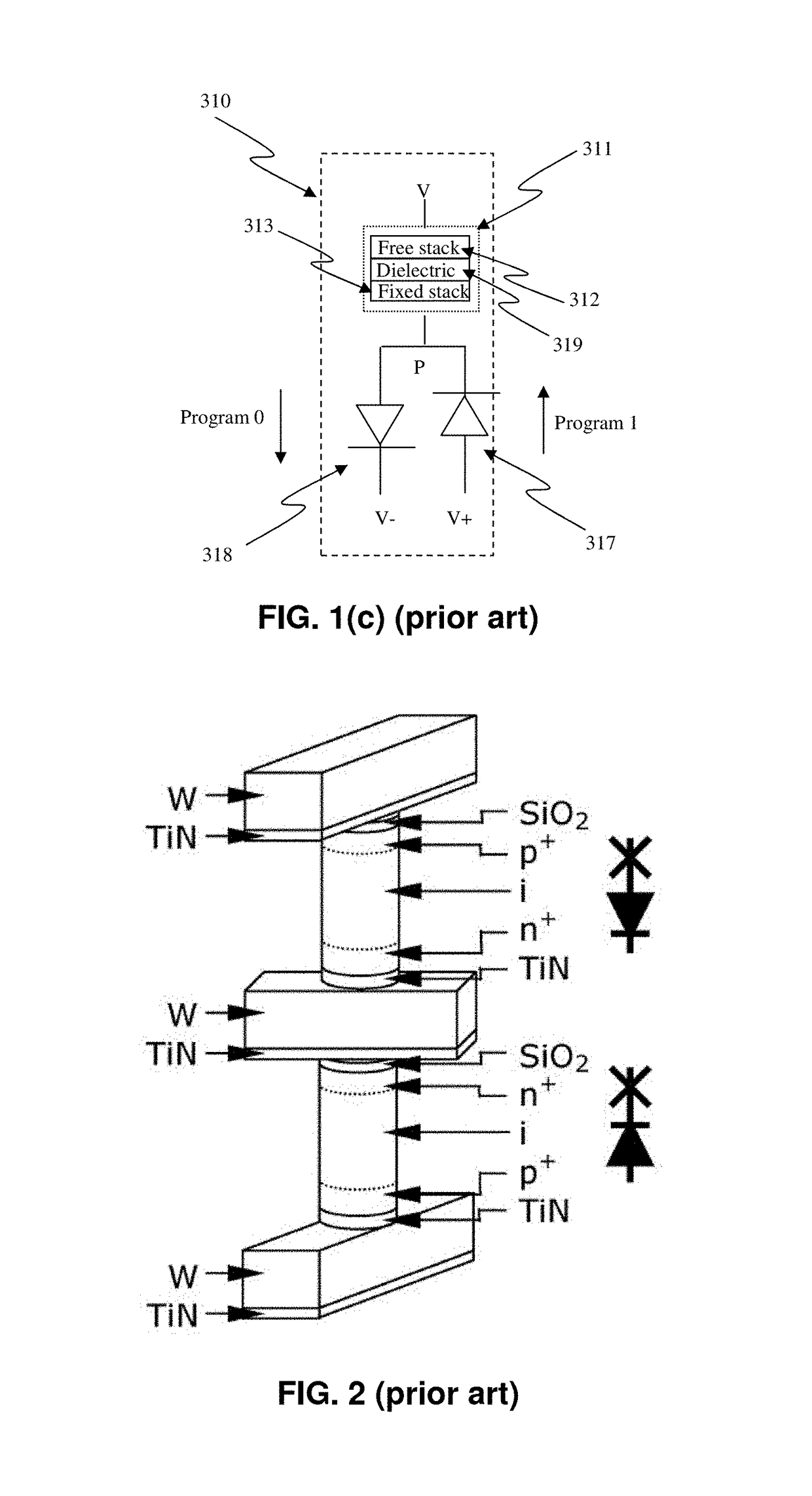Programmable resistive device and memory using diode as selector
a resistive device and selector technology, applied in static storage, digital storage, instruments, etc., can solve the problems of reliability problems, large cell size of electrical fuse using silicided polysilicon, and high program voltage of fuse, so as to reduce cell size and cost
- Summary
- Abstract
- Description
- Claims
- Application Information
AI Technical Summary
Benefits of technology
Problems solved by technology
Method used
Image
Examples
Embodiment Construction
[0051]The present invention relates to programmable memory devices, such as programmable resistive devices for use in memory arrays, built in contact pillars at the cross-over of multiple-layer conductors.
[0052]Embodiments disclosed herein can use at least two arrays of conductor lines in at least two vertical layers to build a Programmable Resistive Device (PRD) in at least one cross-over of the conductor lines. The conductor lines can run in substantially perpendicular directions in alternative layers. A programmable resistive device can be built at the cross-over (i.e. contact) of two conductor lines in two vertical layers. A programmable resistive device has a programmable resistive element (PRE) coupled to one terminal of a diode built vertically and another end coupled to a first conductor. At least one PRE of one PRD can be coupled to a diode or PRE of another PRD in a single-diode PRD cell according to one embodiment. At least one PRE of two PRDs can be shared to create a du...
PUM
 Login to View More
Login to View More Abstract
Description
Claims
Application Information
 Login to View More
Login to View More - R&D
- Intellectual Property
- Life Sciences
- Materials
- Tech Scout
- Unparalleled Data Quality
- Higher Quality Content
- 60% Fewer Hallucinations
Browse by: Latest US Patents, China's latest patents, Technical Efficacy Thesaurus, Application Domain, Technology Topic, Popular Technical Reports.
© 2025 PatSnap. All rights reserved.Legal|Privacy policy|Modern Slavery Act Transparency Statement|Sitemap|About US| Contact US: help@patsnap.com



